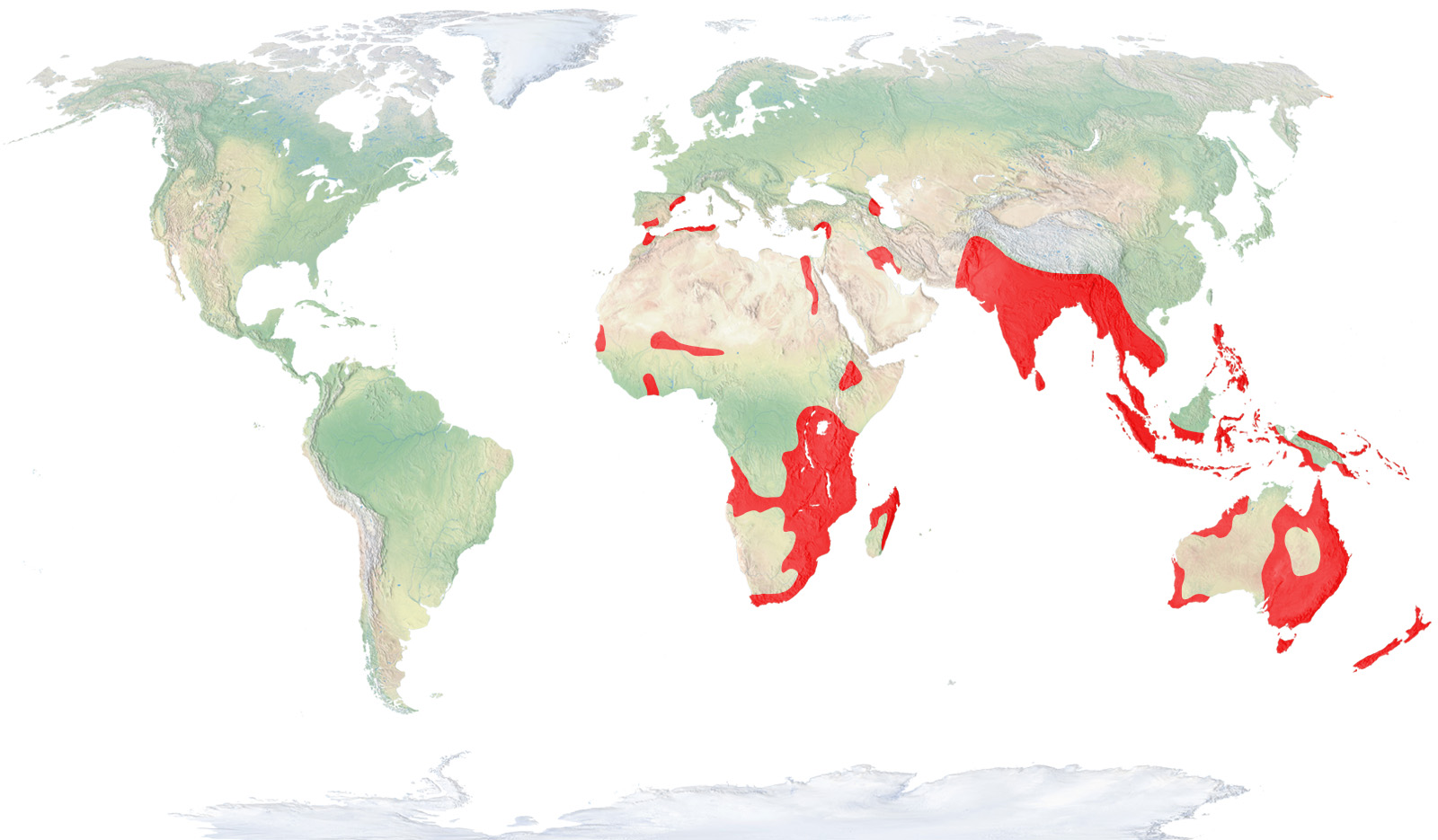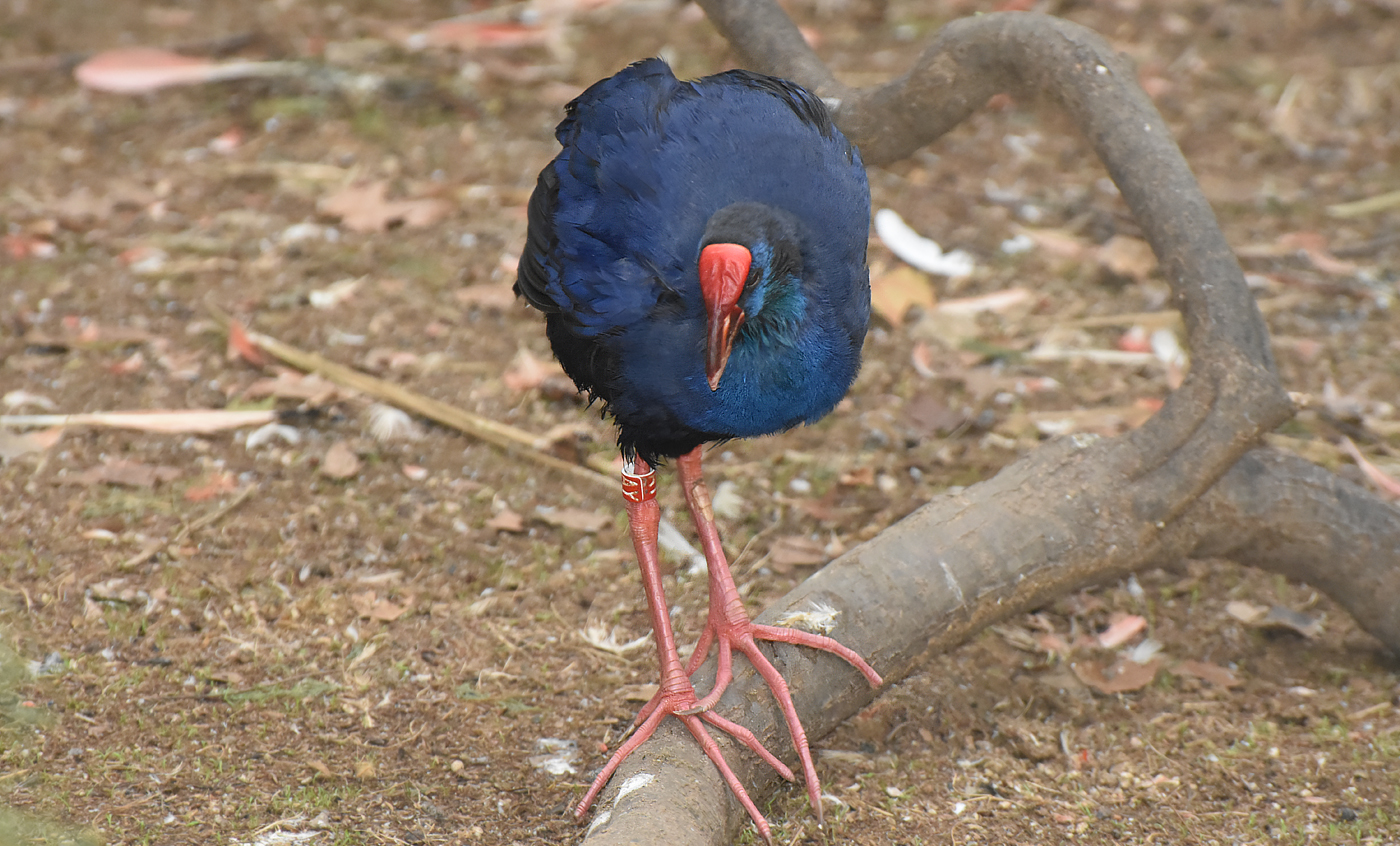Purple swamphen
In spite of its bright colouring, the swamphen is easily frightened so it does not often show itself.
Its long toes enable it to walk through the semi-flooded reed beds where it lives and to peck at its food while holding it. The swamphen is omnivorous and preys on small water vertebrates, insects and crustaceans although its diet mainly consists of the tender shoots of bulrushes and other plants.
Natural habit
Widespread across paleartic and Australia

- Distribution / Resident
- Breeding
- Wintering
- Subspecies
Risk level
- Extint
- Extint in the wild
- Critically endangered
- In Danger
- Vulnerable
- Near threatened
- Minor concern
- Insufficient data
- Not evaluated
Taxonomy
Physical characteristics
Biology
Reproduction
Biology
The western swamphen stands out for its frontal shield, scarlet-red legs and bright turquoise plumage. The face, throat and part of the neck are a paler colour and it has a very conspicuous white bottom. Not much of a swimmer, their long toes let them move through semi-flooded cane fields and hold down food while pecking it. Due to their broad distribution in the Old World and Oceania, the western swamphen is classified by 13 subspecies, including some with odd and wonderful variations in their colouring and plumage. The subspecies endemic to Madagascar, for example, has similar colouring on its body, but part of the wings and dorsal are green and golden. However, in the Philippines the subspecies there has much lighter plumage—white at some points on the head and neck—and a brownish dorsal with yellow hues.
It mainly inhabits swampy areas and non-flowing aquatic ecosystems with abundant vegetation and reed beds on their shores, in Europe, central and southern Africa, the Indian subcontinent and Southeast Asia, as well as all of Indonesia and the coasts of Australia.
Omnivorous, they prey on small aquatic vertebrates, crustaceans and insects, even though their main diet is tender marram grasses and other plants.
Due to the extensive distribution area of this species, it is hard to pinpoint a breeding season, as in more temperate regions it breeds in summer, while in the southern Sahara and southern hemisphere it tends to be in September and October. Breeding systems also vary by subspecies, as toward the north they tend to form monogamous pairs, while in southern and, especially, tropical regions, they can be communal. Despite this, the species—which is common in its entire area of distribution—builds nests from aquatic plant matter and dry reeds in reed swamps. It lays from three to five eggs, although this varies depending on several conditions, with both sexes incubating them from 23 to 27 days. Breeding is communal for this subspecies, and there are even young, pre-breeding age, individuals that help with the chicks.
Their customs and shy nature mean that they are rarely spotted in the swamplands covered with reeds and the shores of lagoons with thick vegetation that they inhabit.
Species with an extensive distribution around the world, typical of tropical and subtropical climates. Their presence, tightly connected to bulrush reeds, has become increasingly rare, in line with the regression of the populations of this aquatic plant and the desiccation of the marshes.
They continue to be common around the world through their Asian and Australian subspecies, although in Europe there is only a small population in southern Spain and North Africa remaining. Spain concentrates about 90% of the entire European population.
In our country, after having been in an extremely critical situation, in recent decades they have recovered significantly and their former area of distribution is slowly being recovered.





